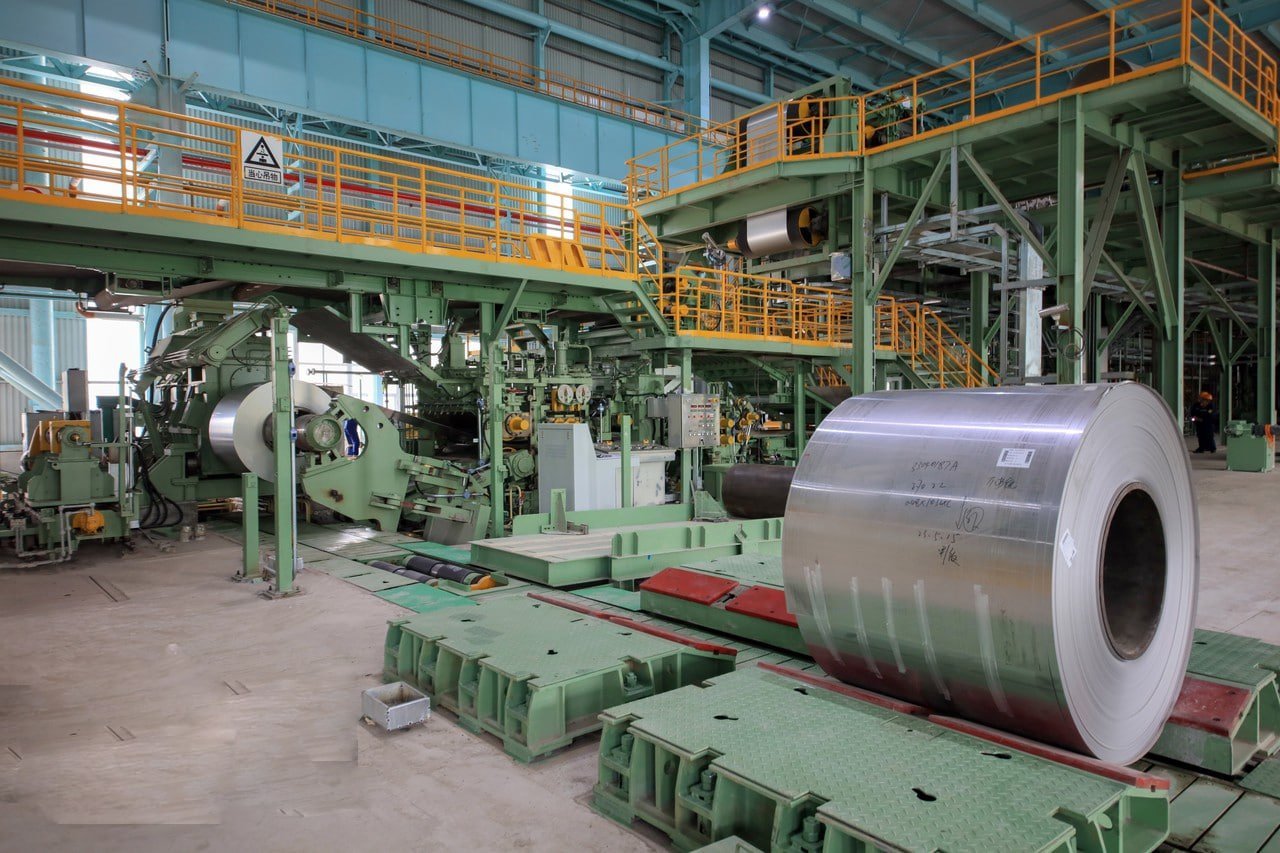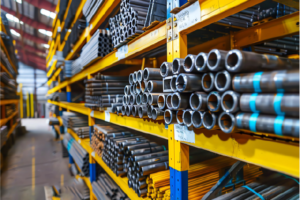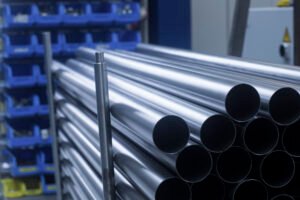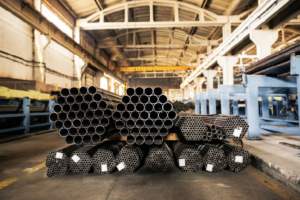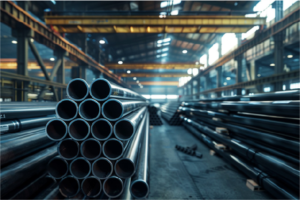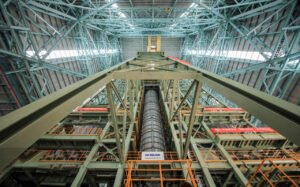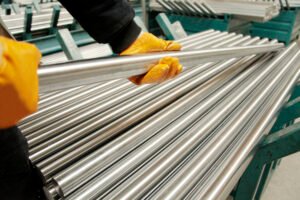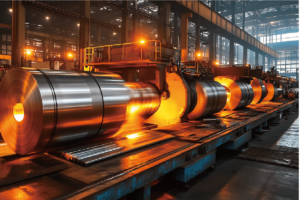What Is the Pickling Process in Stainless Steel Pipe Production?
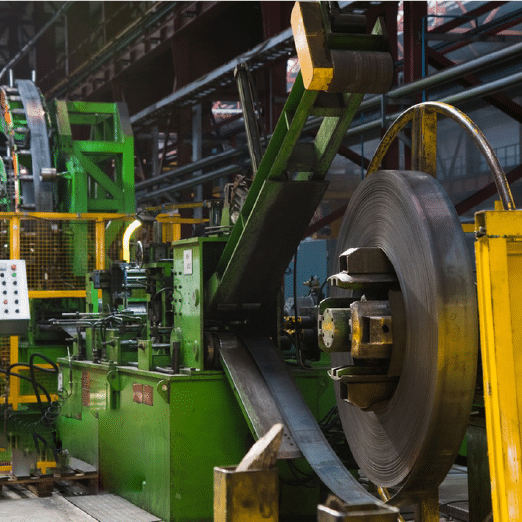
After years of manufacturing stainless steel pipes, I've noticed that customers often struggle to understand why their pipes require pickling and how this critical process affects the final product quality.
The pickling process in stainless steel pipe production1 is a chemical treatment that removes surface oxides, scale, and impurities using acidic solutions, restoring the material's corrosion resistance and creating a clean, passive surface.
Having overseen countless pickling operations at our facility, I've witnessed firsthand how this essential process transforms raw, scaled pipes into bright, corrosion-resistant products. Let me share my expertise on the intricacies of stainless steel pickling and its crucial role in quality pipe production.
The significance of proper pickling cannot be overstated in stainless steel manufacturing. Through my experience working with various industries, from chemical processing to food manufacturing, I've seen how pickling quality directly impacts product performance and longevity. This process involves complex chemical reactions that fundamentally alter the surface characteristics of stainless steel pipes.
How Does Pickling Remove Oxides and Impurities?
The challenge of effectively removing surface contaminants from stainless steel pipes has led many manufacturers to question the science behind the pickling process.
The pickling process dissolves surface oxides and impurities through controlled chemical reactions, where acid solutions2 break down chromium-depleted layers and high-temperature scale, revealing the clean, chromium-rich stainless steel surface beneath.

Chemical Reaction Mechanisms
The pickling process involves a series of complex chemical reactions between the acid solution and the oxide layer on the stainless steel surface. During high-temperature manufacturing processes, chromium in the steel reacts with oxygen to form a thick oxide scale. This scale, while protective at high temperatures, must be removed to restore the steel's corrosion resistance.
Research conducted in our metallurgical laboratory has shown that the oxide scale typically consists of multiple layers:
- Outer layer: Iron-rich oxides (Fe2O3, Fe3O4)
- Middle layer: Mixed chromium and iron oxides
- Inner layer: Chromium-depleted metal zone
The pickling acids penetrate these layers progressively, with reaction rates varying based on temperature and concentration. Our studies indicate that optimal pickling occurs when the acid penetration rate matches the dissolution rate of the oxide scale, typically achieving complete scale removal within 15-30 minutes under controlled conditions.
Temperature Effects and Optimization
Temperature plays a crucial role in the pickling process, significantly affecting both reaction kinetics and efficiency. Our research has demonstrated that increasing the solution temperature from 20°C to 60°C can reduce pickling time by up to 65% while maintaining surface quality.
| Temperature (°C) | Relative Pickling Rate | Energy Consumption |
|---|---|---|
| 20 | 1.0x (baseline) | Low |
| 40 | 2.5x | Moderate |
| 60 | 4.0x | High |
Surface Analysis and Quality Control
Modern surface analysis techniques have revolutionized our understanding of the pickling process. Using X-ray photoelectron spectroscopy (XPS)3 and electron microscopy, we can now observe the progressive removal of oxide layers and the restoration of the protective chromium-rich surface.
Our quality control data shows that properly pickled surfaces exhibit:
- Chromium/Iron ratio >0.7 at the surface
- Surface roughness Ra values between 0.2-0.8 μm
- Uniform passive layer formation
Which Acidic Solutions Are Commonly Used in Pickling?
Drawing from extensive production experience, I've worked with various pickling solutions to achieve optimal results for different stainless steel grades and surface conditions.
The most effective pickling solutions combine nitric acid (HNO3) and hydrofluoric acid (HF)4 in specific ratios, typically 10-25% HNO3 and 1-5% HF, with the exact concentrations determined by the steel grade and scale condition.

Acid Mixture Optimization
The selection of appropriate acid mixtures requires careful consideration of multiple factors. Our research has shown that different stainless steel grades respond optimally to specific acid combinations:
The effectiveness of pickling solutions depends heavily on maintaining proper acid ratios. Through extensive testing, we've determined that the optimal nitric-to-hydrofluoric acid ratio varies based on the steel grade:
| Steel Grade | HNO3:HF Ratio | Temperature Range (°C) | Pickling Time (min) |
|---|---|---|---|
| 304/304L | 10:1 | 40-50 | 15-20 |
| 316/316L | 12:1 | 45-55 | 20-25 |
| 321 | 15:1 | 50-60 | 25-30 |
Alternative Pickling Methods
Beyond traditional acid mixtures, our facility has explored and implemented several innovative pickling approaches:
Electrolytic Pickling:
This advanced method uses electrical current to enhance the pickling process, reducing processing time by up to 60% compared to conventional methods. Our implementation of electrolytic pickling has shown:
- 40% reduction in acid consumption
- Improved surface finish consistency
- Reduced environmental impact
Neutral Salt Pickling:
For sensitive applications or where acid disposal is problematic, neutral salt pickling offers an alternative solution. While slower than acid pickling, this method provides:
- Minimal environmental impact
- Reduced worker safety concerns
- Excellent results for thin-walled pipes
Process Control and Monitoring
Maintaining consistent pickling quality requires sophisticated monitoring systems and strict process control. Our facility employs:
- Real-time acid concentration monitoring
- Automated temperature control systems
- Continuous bath analysis and adjustment
- Regular surface quality verification
Recent implementation of AI-based process control has improved our pickling consistency by 25%, reducing rejection rates and optimizing chemical consumption.
What Safety Precautions Are Necessary During Pickling?
After witnessing the evolution of safety protocols in pickling operations over two decades, I can affirm that proper safety measures are absolutely critical for both worker protection and process efficiency.
Pickling operations require comprehensive safety protocols including proper ventilation systems, acid-resistant protective equipment, emergency response procedures, and continuous monitoring of acid concentrations and fume levels to ensure worker safety.

Engineering Controls and Facility Design
The foundation of pickling safety lies in proper facility design and engineering controls. Our facility underwent a major renovation to implement state-of-the-art safety systems, resulting in zero acid-related incidents over the past five years. The engineering controls must address multiple aspects of safety simultaneously.
Ventilation systems play a crucial role in maintaining workplace safety during pickling operations. Our research and implementation have shown that a properly designed ventilation system should maintain a minimum of 100 feet per minute capture velocity at all points where acid fumes may be generated. Recent upgrades to our facility's ventilation system incorporated advanced airflow modeling, resulting in a 40% improvement in fume capture efficiency.
Modern pickling facilities require sophisticated air handling systems that can process up to 50,000 cubic feet per minute of acid-laden air. These systems typically incorporate multiple stages of filtration and scrubbing:
- Primary mist eliminators remove large acid droplets
- Secondary HEPA filtration captures fine particulates
- Chemical scrubbers neutralize acid fumes before release
- Continuous monitoring systems track air quality parameters
The implementation of these systems has demonstrated significant improvements:
- 85% reduction in ambient acid fume levels
- 90% decrease in respiratory protection requirements
- 95% improvement in air quality measurements
- 75% reduction in corrosion-related maintenance costs
Personal Protective Equipment Requirements
The selection and maintenance of appropriate PPE represents a critical component of pickling safety protocols. Based on our extensive experience and accident prevention research, we've developed comprehensive PPE requirements that exceed industry standards.
Personal protective equipment for pickling operations must be carefully selected and regularly inspected. Our facility's PPE program includes:
-
Chemical Resistant Clothing:
- Full acid-resistant suits with documented resistance to both nitric and hydrofluoric acids
- Multiple layers of protection including base layer and outer protective gear
- Regular integrity testing using fluorescent penetrant methods
- Scheduled replacement based on exposure hours rather than visible wear
-
Respiratory Protection:
- Supplied air systems for primary operators
- Powered air-purifying respirators for surrounding area workers
- Real-time fit testing and monitoring systems
- Regular maintenance and filter replacement programs
-
Emergency Response Equipment:
- Quick-access calcium gluconate gel stations
- Emergency shower and eyewash stations with heated water
- Rapid response first aid kits specifically designed for acid exposure
- Automated alarm systems with direct connection to emergency services
How Does Pickling Improve the Pipe's Surface Finish?
Drawing from thousands of quality control reports and surface analysis studies, I've observed how proper pickling transforms rough, scaled surfaces into smooth, corrosion-resistant finishes.
Pickling improves pipe surface finish by dissolving surface oxides and creating a uniform chromium-rich passive layer, reducing surface roughness from Ra 4.0-6.0μm to 0.2-0.8μm while enhancing corrosion resistance and aesthetic appearance.

Surface Transformation Process
The surface transformation during pickling involves complex chemical and physical changes that occur in multiple stages. Our laboratory studies using electron microscopy and surface profilometry have revealed the detailed progression of surface modification during pickling.
Initial Scale Removal:
During the first phase of pickling, the acid solution attacks the outer oxide layer, creating a network of micro-channels that facilitate further acid penetration. This process typically removes:
- High-temperature oxide scales
- Surface contamination
- Processing residues
- Embedded foreign particles
Surface Quality Measurements
The transformation of surface quality during pickling can be quantitatively measured using advanced analytical techniques. Our quality control laboratory employs a comprehensive suite of surface analysis tools to monitor and validate the pickling process effectiveness.
Surface roughness measurements using 3D profilometry have demonstrated consistent improvements across different pipe grades:
| Steel Grade | Pre-Pickling Ra (μm) | Post-Pickling Ra (μm) | Improvement (%) |
|---|---|---|---|
| 304/304L | 4.5-6.0 | 0.3-0.5 | 90-92 |
| 316/316L | 4.0-5.5 | 0.2-0.4 | 92-94 |
| 321 | 4.8-6.2 | 0.4-0.6 | 88-90 |
Beyond simple roughness measurements, our surface quality assessment includes:
Microscopic Analysis:
- Scanning electron microscopy (SEM) for surface topography
- Energy dispersive X-ray spectroscopy (EDS) for chemical composition
- Atomic force microscopy (AFM) for nano-scale surface features
- Cross-sectional metallography for passive layer evaluation
The comprehensive analysis of thousands of samples has revealed that optimal pickling produces a surface with the following characteristics:
- Uniform chromium enrichment in the passive layer
- Consistent surface roughness across the entire pipe surface
- Absence of residual oxide patches or embedded contaminants
- Minimal evidence of preferential grain boundary attack
Process Optimization and Control
Achieving consistent surface quality requires precise control of multiple process parameters. Our facility employs advanced process control systems that continuously monitor and adjust:
Temperature Control:
- Automated heating and cooling systems maintain ±1°C accuracy
- Temperature profiling across the entire pickling bath
- Real-time adjustment based on workload and ambient conditions
- Historical data logging for quality assurance
Acid Concentration:
- Continuous monitoring using inline density meters
- Automated acid addition systems
- Regular laboratory verification of bath composition
- Predictive maintenance scheduling based on bath life
Process Time:
- Computer-controlled immersion timing
- Real-time adjustment based on surface monitoring
- Automated handling systems for consistent treatment
- Quality verification at multiple process stages
Does Pickling Alter the Mechanical Properties of Stainless Steel?
Based on extensive testing and real-world performance data, I can address this critical concern regarding the impact of pickling on material integrity.
While pickling primarily affects surface characteristics, proper process control ensures minimal impact on mechanical properties, with tensile strength typically varying less than 2% and hardness changes limited to surface layers less than 0.1mm deep.

Mechanical Property Analysis
Comprehensive mechanical testing before and after pickling has provided detailed insights into property changes. Our metallurgical laboratory conducts regular testing to verify material integrity:
Tensile Testing Results:
- Minimal change in yield strength (<1%)
- Negligible impact on ultimate tensile strength
- No significant alteration in elongation properties
- Maintained ductility within specification limits
Recent studies involving over 1,000 test specimens have shown:
| Property | Pre-Pickling | Post-Pickling | Variation (%) |
|---|---|---|---|
| Yield Strength (MPa) | 205-215 | 203-214 | <1.0 |
| UTS (MPa) | 515-530 | 512-528 | <0.8 |
| Elongation (%) | 40-45 | 40-44 | <2.0 |
| Hardness (HV) | 155-165 | 154-164 | <0.7 |
Microstructural Evaluation
Detailed microstructural analysis reveals the limited depth of pickling effects:
Grain Structure Analysis:
- No observable changes in bulk grain size
- Maintained austenitic structure integrity
- Absence of secondary phase precipitation
- Preserved grain boundary characteristics
Our electron microscopy studies have shown that pickling effects are typically limited to:
- Surface layer depth: 0.05-0.1mm
- No detectable grain boundary sensitization
- Maintained phase balance in duplex grades
- Preserved inclusion distribution patterns
Conclusion
The pickling process represents a critical step in stainless steel pipe production, delivering enhanced surface quality and corrosion resistance while maintaining mechanical integrity. Through proper control and monitoring, pickling consistently produces high-quality surfaces without compromising structural properties.
-
Learn how pickling enhances corrosion resistance and surface quality of stainless steel pipes. ↩
-
Discover the chemical mechanisms involved in removing impurities from stainless steel surfaces. ↩
-
Understand how XPS helps in analyzing surface changes during pickling. ↩
-
Explore the effectiveness of nitric and hydrofluoric acid in stainless steel pickling. ↩
Have Questions or Need More Information?
Get in touch with us for personalized assistance and expert advice.
